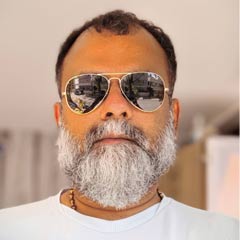Bengaluru: The Defence Research and Development Organisation (DRDO) have come out with yet another solution to aid India’s fight against COVID-19.
Sources confirm to Onmanorama that the Centre for Artificial Intelligence and Robotics (CAIR), one of the most sensitive and less-talked about laboratories of DRDO based out of Bengaluru has already offered various state government an information technology-driven approach to enable tracking of people under quarantine.
One of DRDO Young Scientists Labs (DYSL) dedicated to Artificial Intelligence (opened by Prime Minister Narendra Modi this January), too have partnered with CAIR in this societal mission.
A team of 20 scientists is said to have worked behind developing this solution called SAMPARC, which means: Smart Automated Management of Patients and Risks for COVID-19.
Tracking patients

SAMPARC is a software that includes an App that would be installed on the smart phones of the patients. It is a server-side application that would be used by the state authorities to track the patients.
Hosted exclusively for the use of state governments, it took scientists about three weeks to develop it. The launch version of the App was released during the first week of April to the Uttar Pradesh government.
The scientists are already working on the next version of the software based on the feedback from the users. Several state governments, including Maharashtra where the COVID-19 cases have shot up, are set to use this App.
“The initial stages of the deployments are with UP, Maharashtra and Nagaland. Based on their inputs from initial deployment and discussions, we have incorporated additions. Large scale usage is expected to happen in due course,” an official said.
Unlike several other DRDO labs, CAIR has always remained under the radar owing to the sensitive missions being handled.
SAMPARC is meant only for tracking and not for contact tracing. “Therefore, it does not need any private information of the patient except his/her location of quarantine and the current location of the patient, as well as their photographs,” says the official.
It would function based on authentic information fed by the state officials and not based on crowd sourced data.
Colour codes
The system would enable geo-fencing, AI-based automated face recognition (between selfie taken during registration and subsequent selfies sent by the patient), and would have the capability to display the information to the state officials on a map which can be colour-coded to depict hotspots and containment zones.
“From the perspective of the patients, honest usage of SAMPARC could give them an option of home isolation instead of isolation in a government facility,” the official added.
SAMPARC is expected to drastically reduce the overhead of tracking every patient under home isolation, thereby reducing the load on the state machinery.
With SAMPARC, the officials can easily track the violators and can also perform random checks. The violators would be shown in red on a map if they break the geo-fence or their selfie(s) does not match; would be shown in blue if their smart phones stop sending periodic updates; and in green if everything is found satisfactory.
“Once the period of quarantine or isolation is over, the patients can uninstall the App from their smart phones,” adds the official.
(The writer is an independent aerospace and defence journalist, who blogs at Tarmak007 and tweets @writetake.)

















